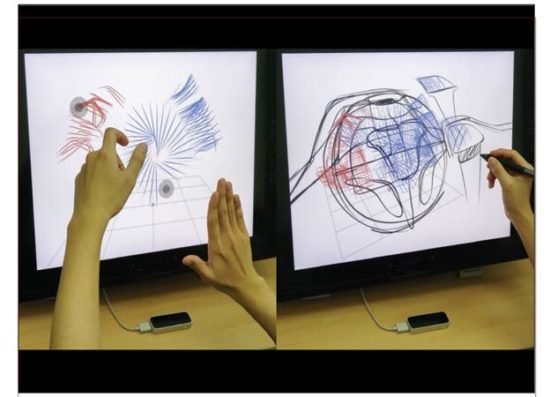“Agile 3D sketching with air scaffolding” won best paper at the Computer–Human Interaction Conference 2018.
In between 2D and 3D, there is space—space that humans can understand visually and can often communicate gesturally but challenging for pen and paper. The Korea Advanced Institute of Science and Technology (KAIST) has revealed the work they’ve done to enable 3D sketching that takes advantage of people’s spatial understanding.
Researchers Bae Seok-Hyung, Kim Yongkwan, Sang-Gyun An, Joon Hyub Lee described their work at the 2018 Computer–Human Interaction Conference in Montreal in April 2018. Their work is described in a research paper available through the ACM. The team says their work combines the use of rough 3D hand gestures to map out a 3D space, with pen input to fill in the details.

The researchers conducted tests with students and found they were able to come up with useful 3D prototype images much more rapidly using the combination of gesture and drawings outlined by the team.
So far much of the work has been done to explore the use of this technique in industrial design, specifically automotive design, but the researchers believe the technique can be used for any 3D design or modeling task.






